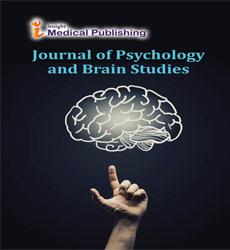Attentional Control Theory: An Overview
Anthony P. Monaco*
Department of Human Genetics, University of Oxford, Oxford, United Kingdom
- *Corresponding Author:
- Anthony P. Monaco
Department of Human Genetics
University of Oxford
Oxford, United Kingdom
E mail: anthony.monaco@well.ox.ac.uk
Received Date: September 07, 2021; Accepted Date: September 21, 2021; Published Date: September 28, 2021
Citation: Monaco PA (2021) Attentional Control Theory: An Overview. J Psychol Brain Stud Vol. 5, No.9:43.
Commentary
According to the Attentional Control Theory (ACT), anxiety is linked to executive function impairments. Anxiety and depression are quite common and commonly co-occur throughout life. Both illnesses begin at a young age, are highly frequent in young individuals, and predict long-term mental health problems. Biases in how people pay attention to, understand, and retain emotional information (especially negative information) have been linked to the emergence and persistence of internalising symptoms and illnesses. Attentional processing of non-emotional information in anxious and depressed people has been the subject of recent research.
According to dual-processing theories, attention is chosen based on a rivalry between two attentional systems: a stimulus-driven bottom-up system and a volitional top-down system. Internalizing disorders may be caused by attentional imbalance. Trait anxiety reduces the effectiveness of the volitional system, according to attentional control theory (ACT), with bottom-up attentional selection processes overriding the top-down control system. In younger populations, there is an increasing interest in studying the relationship between attentional control, internalising symptoms, and cognitive biases. There is a link between poor attentional control and internalising symptoms in children, according to limited empirical evidence. These findings are consistent with ACT, implying that in children with anxiety and depressive symptoms, bottom-up attentional capture outweighs top-down control.
Furthermore, the highest degrees of internalising issues were related with high negative emotionality mixed with inadequate attentional control, demonstrating that attentional control had a moderating influence. Many research, however, relied on self- reported attentional control, which may be a drawback given that questionnaire measures of attentional control rarely match observed behavioural measures of attentional control. Previous research has tended to utilise rather sophisticated measures of attentional processes, such as the Stroop task, which are assumed to include multiple elements of information processing, making it difficult to distinguish which one is linked to internalising symptoms. The bottom-up system is more dominating than the top-down system during initial attention competition, according to this relatively pure measure of attentional control.
Participants explore an array of forms for a target odd shape, but on half of the trials, a prominent, task-irrelevant colour distractor is present. A dominant top-down system is identified by the unique shape that is unaffected by whether or not the task-irrelevant distractor is present. The amount of attentional capture via the bottom-up system is indexed by the amount of slowing caused by the presence of a distractor, providing a direct measure of inhibitory attentional control.
The current study's merits include the use of a sensitive behavioural task and its new adaption to evaluate the effect of ACT in the setting of emotional cues. There are, however, some limitations. Anxiety and depression symptoms in children are linked to worse attentional control, supporting ACT in a school- aged population. This overall attentional impairment may define children with elevated anxiety and depression symptoms, and it may coexist with or possibly underpin attentional biases, which are frequently detected in this population on tasks examining selective processing of emotional stimuli. Future study should look at whether attentional control plays a role in the development and maintenance of cognitive biases, as well as the therapeutic potential of attentional training for anxiety and depression.
Open Access Journals
- Aquaculture & Veterinary Science
- Chemistry & Chemical Sciences
- Clinical Sciences
- Engineering
- General Science
- Genetics & Molecular Biology
- Health Care & Nursing
- Immunology & Microbiology
- Materials Science
- Mathematics & Physics
- Medical Sciences
- Neurology & Psychiatry
- Oncology & Cancer Science
- Pharmaceutical Sciences
